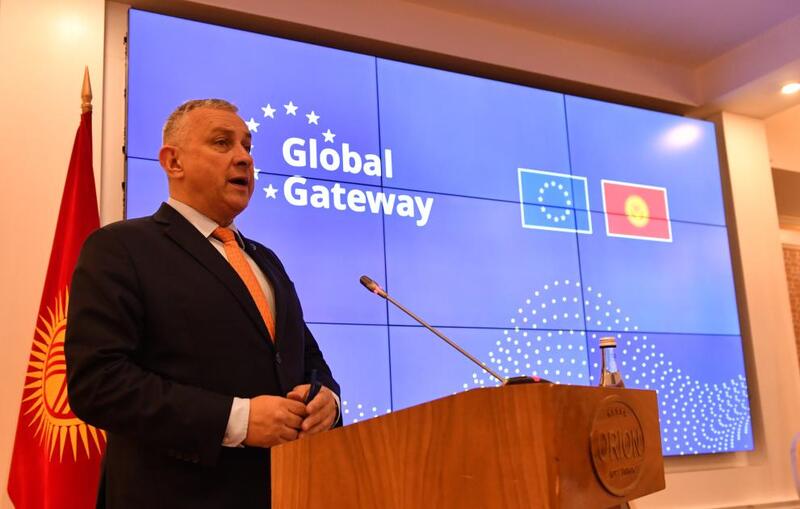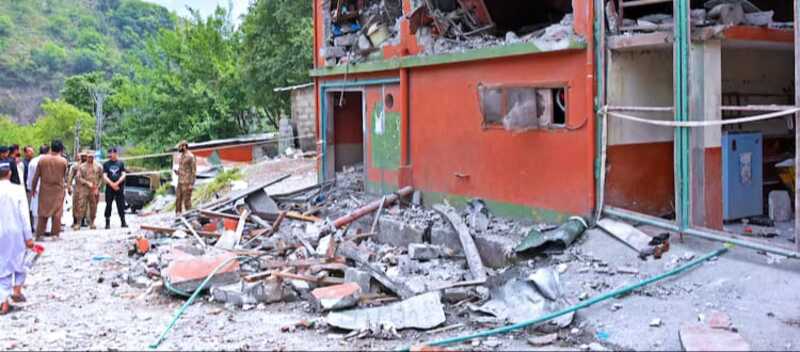 Commissioner Sikela emphasizes on EU-Central Asia partnership. Photo Credits: EU
Commissioner Sikela emphasizes on EU-Central Asia partnership. Photo Credits: EU
Samarkand Summit: Eu And Central Asia Forge Strategic Partnership Amid Global Power Shifts
In a groundbreaking move that highlights the increasing global importance of Central Asia, the European Union and the Central Asian nations have elevated their bilateral relationship to a strategic partnership. This development emerged from the first-ever EU-Central Asia Summit, held on April 4, 2025, in Samarkand, Uzbekistan. Leaders from the EU and the five Central Asian republics—Kazakhstan, Kyrgyzstan, Tajikistan, Turkmenistan, and Uzbekistan—came together to forge a new path of cooperation.
A Critical Moment in Global Politics
The summit took place amid a shifting global landscape, marked by alliances in flux, economic recovery following Covid-19, and the continuing Russia-Ukraine conflict. Central Asia’s strategic value—both economically and geopolitically—has driven the EU to deepen engagement in the region. This partnership also reflects Europe’s response to the growing influence of China and Russia in Central Asia.
Central Asia’s Geopolitical Importance
Home to vast natural resources like oil, gas, and rare earth minerals, Central Asia holds a pivotal role in global trade. Its location at the crossroads of Asia, Russia, and Europe gives the region added significance, especially as initiatives like the Middle Corridor—a trade route connecting Europe to Asia while bypassing Russia—gain prominence.
The Samarkand Declaration: Defining Areas of Cooperation
The Samarkand Summit produced the Samarkand Declaration, a blueprint for the new strategic relationship between the EU and Central Asia. Key areas of focus include:
A Critical Moment in Global Politics
The summit took place amid a shifting global landscape, marked by alliances in flux, economic recovery following Covid-19, and the continuing Russia-Ukraine conflict. Central Asia’s strategic value—both economically and geopolitically—has driven the EU to deepen engagement in the region. This partnership also reflects Europe’s response to the growing influence of China and Russia in Central Asia.
Central Asia’s Geopolitical Importance
Home to vast natural resources like oil, gas, and rare earth minerals, Central Asia holds a pivotal role in global trade. Its location at the crossroads of Asia, Russia, and Europe gives the region added significance, especially as initiatives like the Middle Corridor—a trade route connecting Europe to Asia while bypassing Russia—gain prominence.
The Samarkand Declaration: Defining Areas of Cooperation
The Samarkand Summit produced the Samarkand Declaration, a blueprint for the new strategic relationship between the EU and Central Asia. Key areas of focus include:
- Economic Integration Central Asia’s resource wealth is a major draw for the EU. The partnership aims to boost trade through reduced tariffs, streamlined customs, and improved logistical links, including across the Caspian Sea and the Middle Corridor. By mid-2026, the launch of a Central Asia–EU Trade and Investment Platform will prioritize renewable energy, agriculture, and high-tech manufacturing.
- Regional Security Addressing instability from neighboring Afghanistan and extremism, the EU has committed to intelligence sharing, counter-terrorism efforts, and bolstering border security. The formation of an EU-Central Asia Security Dialogue will help tackle shared security challenges.
- Climate Action and Sustainability With pressing environmental issues like water scarcity and desertification, the partnership will prioritize green energy, water management, ecological restoration, and carbon reduction to promote sustainable development.
- Governance and Human Rights Recognizing the need for governance reforms, the EU will support efforts to strengthen democratic institutions, legal frameworks, and civil liberties within Central Asia.
An Alternative to Chinese and Russian Influence
By emphasizing democratic values, multilateral cooperation, and good governance, the EU positions itself as a counterbalance to authoritarian models advanced by China and Russia. The partnership offers Central Asia a sustainable, inclusive growth path that aligns with European values.
A Shift from Confrontation to Collaboration
The EU-Central Asia Strategic Partnership represents a step toward collaboration in a region of growing global importance. Central Asia's natural resources, expanding markets, and crucial trade routes place it at the heart of Europe’s economic and security strategies.
A Transformative Chapter
The Samarkand Summit marks a new phase in regional relations. However, the success of this strategic partnership will depend on how effectively both sides implement the initiatives outlined in the Samarkand Declaration. For the EU and Central Asia, this collaboration holds the promise of interconnected growth, shared prosperity, and greater stability.
Senior Editor: Kenneth Njoroge
Financial Expert/Bsc. Commerce/CPA
